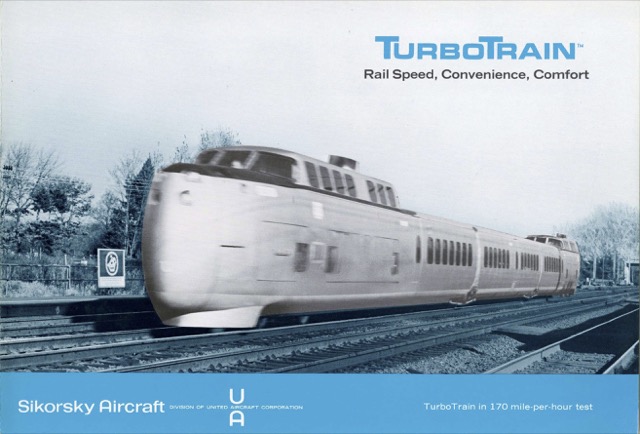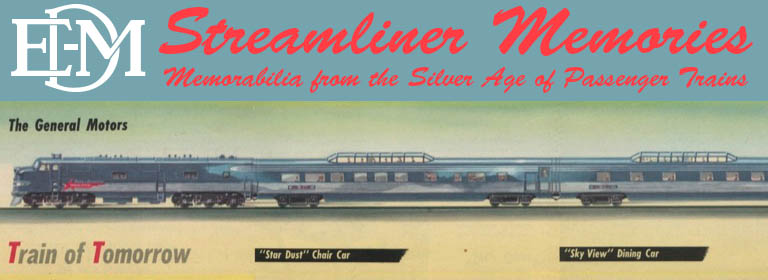When Japan started running bullet trains in 1964, Rhode Island Senator Claiborne Pell decided that America needed similar high-speed trains running between Boston and Washington. He persuaded Congress to pass the High-Speed Ground Transportation Act, which funded construction of the electrically powered Metroliners for use between New York and Washington and gas-turbine TurboTrains for use on the largely unelectrified route between New York and Boston.

Click image to download a 2.9-MB PDF of this brochure.
The TurboTrain was based on a Chesapeake & Ohio concept train that had been featured in Trains magazine’s article, “Who Shot the Passenger Train?” as a “dayliner of tomorrow.” That train, however, minimized weight and costs by having each car share a one-axle truck, the same as the ultra-light trains of 1956. Those trains proved to be failures as passengers regarded them as uncomfortable.
United Aircraft bought the designs from Chesapeake & Ohio and substituted Pratt & Whitney turbine engines for the Diesel-electrics that C&O had planned to use. The turbine engines were so much smaller than the Diesels and generators that United Aircraft was able to add a large “dome” section to the power cars on each end of the trains. The trains themselves were built by Pullman.
In a December, 1967 test, a TurboTrain reached speeds of 171 miles per hour. (In the same month, Budd Metroliners reached test speeds of 164 miles per hour.) Although United Aircraft advertised that the TurboTrains would run at 120 miles per hour in regular service (compared with 130 for the Japanese bullet trains), actual top speeds were 100 miles per hour (95 in Canada), and the average speed between New York and Boston was 63 miles per hour (compared with 64 mph on today’s Acela).
Initially, United Aircraft leased the trains to the federal government, which in turn contracted with the Penn Central to operate them starting in April, 1969. It is politically significant that United Aircraft’s facility to maintain the trains was in Claiborne Pell’s home state of Rhode Island. The trains were both noisy and uncomfortable, and they operated in the United States for less than eight years before Amtrak sidelined them. Several TurboTrains also operated on the Canadian National (later Via) route between Toronto and Montreal for a little more than twelve years.
